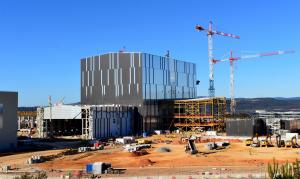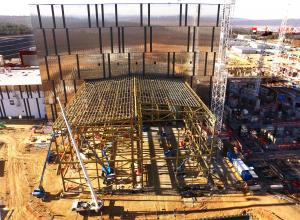The building is imposing—50 metres long, 43 metres wide, 25 metres high—but from the perspective of its future users it is barely large enough. Power supplies (a total input of 100 MW) for both resonance heating systems will occupy the better part of the first two floors, while the top floor will be occupied by the wave generators.
Generators too need a lot of space: on the ECRH side for example, twenty-four 2.5-metre-high gyrotrons —each giving out the equivalent power of 1,000 kitchen microwave ovens—must have an interspace of five metres between them in order to avoid magnetic interference.
Once generated in the Radio Frequency Building, the energetic radio beams must travel 100 metres along transmission lines all the way to the tokamak, where ECRH "launchers" and ICRH antennas—both massive components weighing up to 45 tonnes—will deliver them deep into the plasma.
Installing the sources at a distance from the machine is a choice dictated by magnetic issues: if they were any closer, the intense magnetic field of the tokamak would disrupt that of the generators' gyrotrons.
Over the next few months, the building will evolve rapidly. Soon, the internal floors and side walls will be added and by early spring the building structure will be complete, allowing work to begin on added services.
By mid-2018 the power supplies will be progressively installed, followed by the ECRH gyrotrons and ICRH tetrodes during the years 2019-2020.


